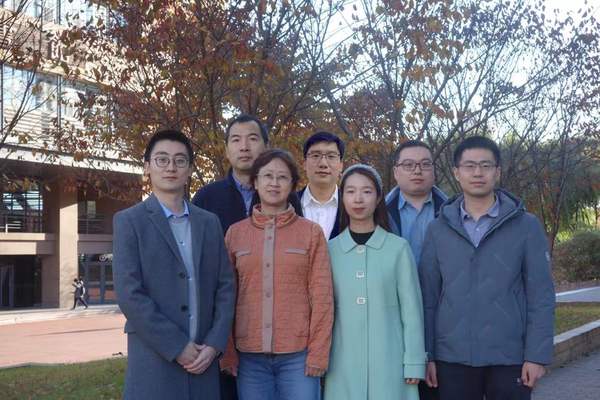
徐聪 李海峰 马琳 薄洪健 孙聪珊 丰上 李洪伟
中心现有教师8人,其中博士生导师1人、教授1人、副教授1人,高级工程师1人。中心研究方向包括类脑学习与记忆方法、情绪与脑认知状态及规律、类脑计算模型、多媒体内容解析技术、智能信息处理技术、脑疾病与脑康复设备、智能通信技术等。研究中心下设脑科学与类脑智能研究中心、脑科学与脑疾病实验室、脑机接口与类脑智能重点实验室以及司法大数据智能处理技术联合实验室等研究平台。致力于通过多模态神经影像技术(如近红外光谱成像、功能磁共振成像、弥散磁共振成像及动脉自旋标记成像技术等)及脑电信号采集分析技术,研究人脑结构和功能连接组的拓扑连接模式及其生理基础的研究,并在此基础上研究听觉认知与言语认知的脑机理,并进一步应用到类脑智能方法和脑疾病诊断和脑康复设备研发中,实现在多媒体上的智能化信息处理。中心主任李海峰教授作为国家重点研发计划首席科学家、国家科技部“2030脑科学与类脑研究”战略专家,近年来带领中心先后牵头国家重点研发计划2项(项目牵头1项、课题牵头一项)。其它项目方面,先后完成国家自然科学基金、省重点研发计划等项目20余项,获得国家科技进步奖1项、省部级科技进步奖5项;在国内外学术刊物和会议上发表论文200余篇,译著2部。
标志性成果:
1. 多媒体内容智能分析处理系统
集成了语音识别、情感识别、话者识别、语种识别、场景分析、音频分割、信息检索等方向的多项科研成果,具有识别准确率高、处理速度快以及可扩展性强等优点,可广泛应用于电视台、通信公司等的节目监控、视频编辑、信息检索等工作中,能够辅助或部分替代工作人员的工作,有助于提高工作效率并节约资源.

多媒体智能处理系统
2. 刑事执行监督控制系统
针对如何高效分析利用在刑事执行过程中产生的视频、音频、文本等多源异构信息,实现智能化的监督与协作这一重要问题开展研究,促进司法部门、检察部门的高效协同,实现信息互通共享,加强突发事件的应急处理能力,有力促进公共安全和社会稳定。在全国9省市18家监所示范应用。

3. 基于经颅电刺激的下肢外骨骼康复系统
将经颅电刺激(TDCS)技术与外骨骼技术结合,用于下肢瘫痪患者的康复训练中。在训练过程中,系统实时检测下肢肌肉发力与运动神经系统的活动,通过人工智能算法调整外骨骼扭矩和TDCS的刺激电流来激活肌肉自主运动能力,达到加强康复效果,缩短康复时间和舒适度的目的。另外基于脑电信号的分析技术可实现意念控制,可广泛应用于残障辅助、特殊岗位需求等。具体包括脑控浏览器、脑控机械臂等。


Brain-inspired Intelligence and Neural Engineering Research Center
The center currently has 8 teachers, including 1 doctoral supervisors, 1 professors, 1 associate professors and 1 senior engineer. Main research fields include brain-inspired learning and memory methods, emotional and brain cognitive states and laws, brain-inspired computational models, multimedia content analysis technology, intelligent information processing technology, brain diseases and brain rehabilitation equipment, intelligent communication technology, etc. The research center is composed of Brain and Intelligence Research Center, Brain Science and Disease Laboratory, Brain-Computer Interface and Brain-inspired Intelligence Key Laboratory and Joint Lab for Judicial Big Data Intelligent Processing Technology. The Center is dedicated to researching the topological connectivity patterns of the structural and functional connectivity groups of the human brain and their physiological basis through multimodal neuroimaging techniques (such as fNIRS, fMRI) and EEG signal acquisition and analysis techniques, and to researching the brain mechanisms of auditory cognition and speech cognition and further applying them to brain-inspired intelligence methods realize intelligent information processing on multimedia and to brain diagnosis and brain rehabilitation equipment development. As the chief scientist of the National Key R&D Program and the strategic expert of 2030 Brain Science and Brain-inspired Research of the Ministry of Science and Technology of China, Prof. Haifeng Li, the director of the Center, has led the Center to lead two National Key R&D Programs in recent years. As for other projects, we have completed more than 20 projects including National High-tech R&D Program of China, National Natural Science Foundation of China (NSFC), Ministerial Foundation Program and key scientific and technological projects, Provincial Key R&D Program, etc. We gained 1 prize for National Science and Technology Progress Award and 10 prizes for Ministerial Science and Technology Progress Award. Over 200 papers have been published in/at domestic and international academic journals and conferences, and two translations have also been published.
